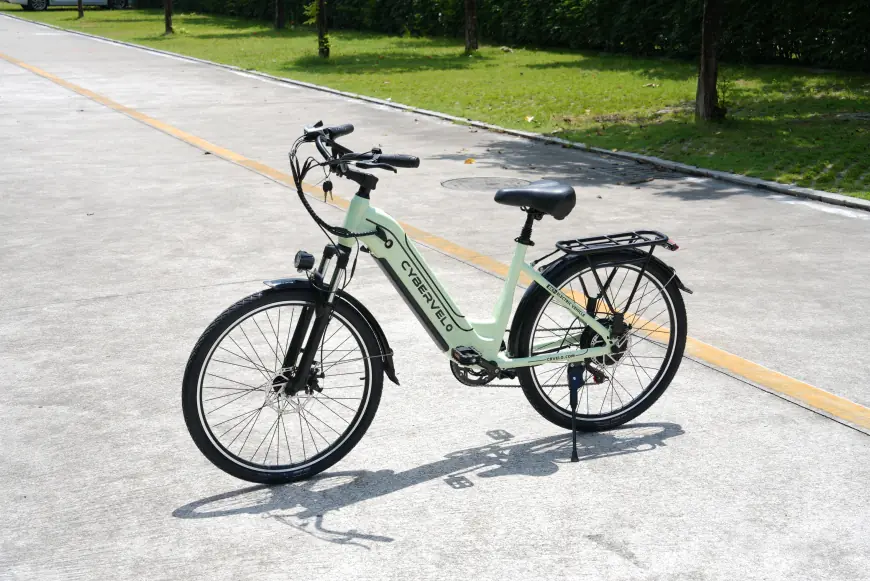The Tech Inside: Demystifying E-Bike Motors, Batteries, and Displays

The seamless glide of an e-bike hides sophisticated technology. Understanding the core components – the motor, battery, and display/controller – demystifies how they work together to create that magical assist.
1. The Motor: The Muscle
Location:
Hub Motors: Integrated into the front or rear wheel hub. Simpler design, often quieter. Rear hub motors generally offer better traction. Don't leverage the bike's gears directly.
Mid-Drive Motors: Mounted at the bike's bottom bracket (crank area). Connects directly to the chain drive. Leverages the bike's gears, making them highly efficient, especially on hills. Offers a more natural "pedaling with power" feel and better overall weight distribution (lower center of gravity). Generally considered higher performance but can be more complex/expensive.
Power & Torque: Measured in Watts (W) and Newton-meters (Nm).
Watts (W): Nominal power (continuous output). Common ranges: 250W (EU standard), 350W, 500W, 750W (common US max). Higher wattage generally means more potential power/speed (within legal limits).
Torque (Nm): Rotational force. Crucial for acceleration and hill climbing. Higher Nm (e.g., 60Nm, 80Nm, 90Nm+) means easier climbing and stronger starts. Mid-drives often excel in torque due to gearing advantage.
Sensors:
Cadence Sensor: Detects if the pedals are turning. Simple, but assistance can feel on/off or delayed.
Torque Sensor: Measures how hard you're actually pedaling. Provides immediate, proportional assistance that feels incredibly natural and intuitive (push harder = more assist instantly). Found on higher-end models.
2. The Battery: The Fuel Tank
Chemistry: Almost exclusively Lithium-ion (Li-ion) due to high energy density, relatively low weight, and no memory effect. Common variants: Lithium Manganese Oxide (LiMn2O4), Lithium Nickel Manganese Cobalt Oxide (NMC).
Voltage (V): Common voltages are 36V and 48V. Higher voltage generally allows for more power delivery (Watts = Volts x Amps) and potentially higher efficiency.
Capacity (Ah & Wh):
Amp-hours (Ah): Current capacity over time. Higher Ah = potentially longer range.
Watt-hours (Wh): The gold standard for range comparison (Volts x Amp-hours = Watt-hours). Represents total energy stored. A 500Wh battery has twice the capacity of a 250Wh battery (theoretically doubling range, all else being equal). Ranges typically from 300Wh to 750Wh+.
Range Factors: Wh capacity is just the start. Actual range depends heavily on: rider weight, cargo, terrain, wind, tire pressure, temperature, and crucially – the assist level used (see Article 5!).
Management System (BMS): A vital internal circuit board protecting the battery: prevents overcharging, over-discharging, monitors cell health/balance, manages temperature, and ensures safety.
3. The Display & Controller: The Brain
Display: The user interface, usually mounted on the handlebar. Shows critical information:
Assist Level (Eco, Tour, Sport, Turbo)
Battery Charge Level (often in % or bars)
Speed (Current, Average, Max)
Odometer / Trip Distance
Estimated Range (often optimistic!)
Connection to bike computers/apps (via Bluetooth)
Controller: The unseen computer (often housed with the display or elsewhere on the frame). It's the central nervous system:
Receives input from sensors (pedal cadence/torque, speed, brake cut-off sensors).
Receives input from the display (assist level selected).
Processes this data and regulates power flow from the battery to the motor.
Manages safety functions (e.g., cutting motor power when brakes are applied).
What's Your Reaction?
 Like
0
Like
0
 Dislike
0
Dislike
0
 Love
0
Love
0
 Funny
0
Funny
0
 Angry
0
Angry
0
 Sad
0
Sad
0
 Wow
0
Wow
0



















































